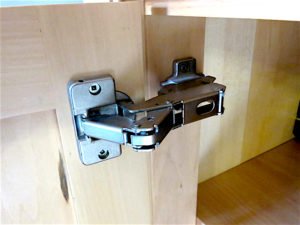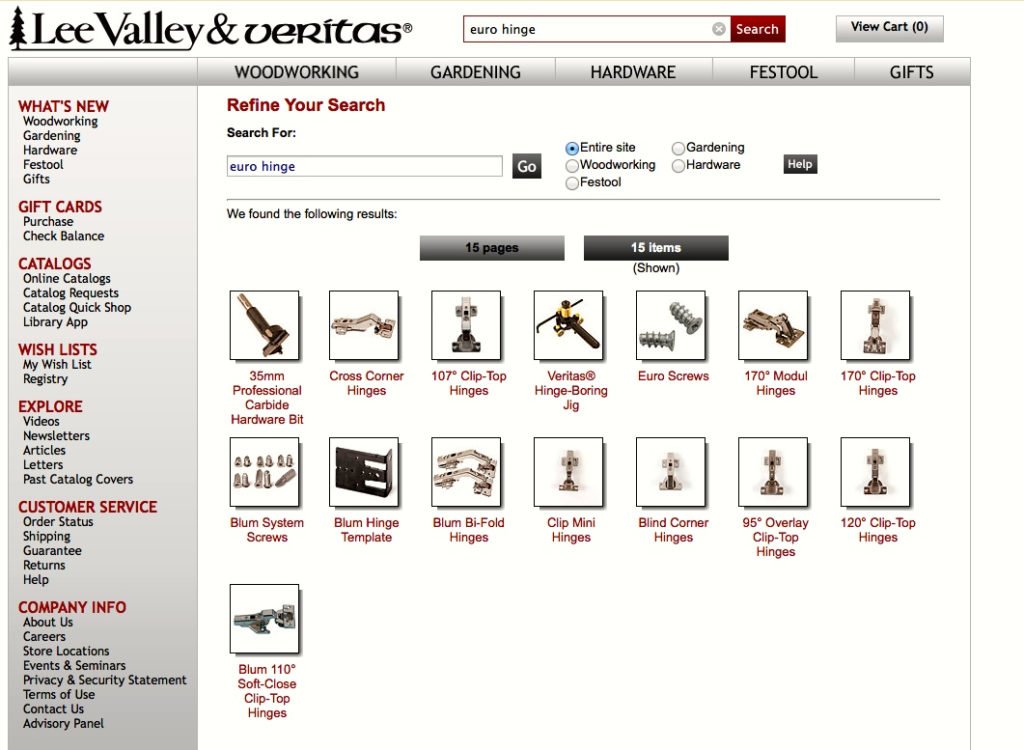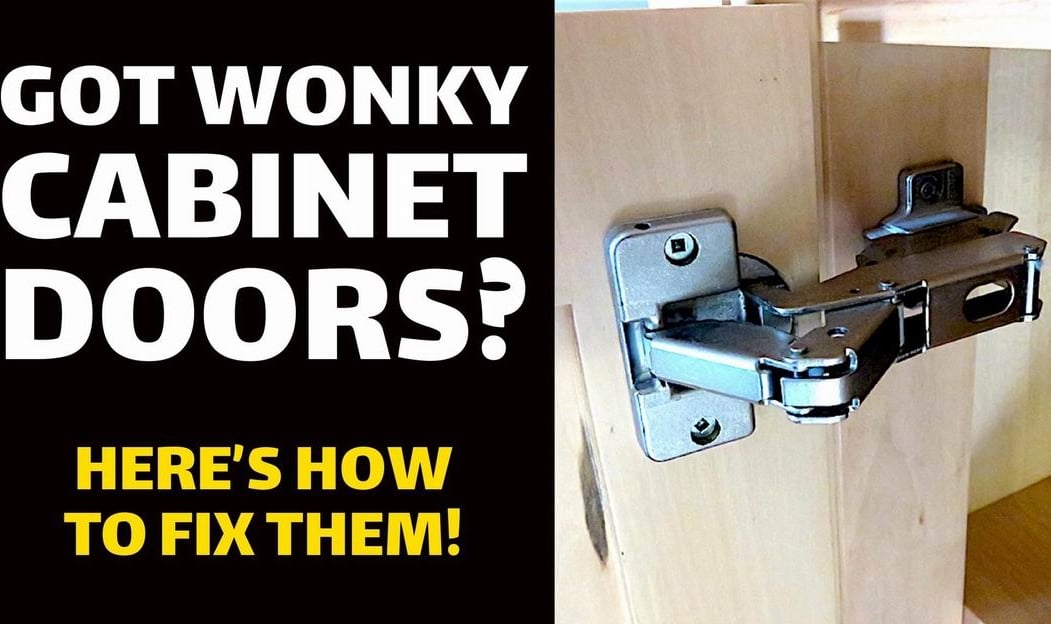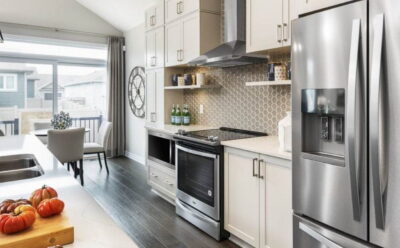 From everything that I see, modern kitchen and bathroom cabinet doors in many homes are in bad shape. It’s mostly because of bad hinges.
From everything that I see, modern kitchen and bathroom cabinet doors in many homes are in bad shape. It’s mostly because of bad hinges.
Doors sag, they hit each other, or they do a funny flip-flop when you move them, sort of like someone with a hip joint that gets thrown out of whack unless they walk just the right way.
The really surprising thing is how many people put up with aggravating cabinet doors. And there’s no need. This article is all about adjusting or replacing the kind of European hinges found on almost all modern cabinets.

This is what a high-quality European cabinet door hinge looks like. Notice the all-metal construction.
European hinges were designed as part of a campaign to boost the efficiency of new cabinet construction after the Second World War, when the need to replace thousands of bombed-out homes loomed large. Euro hinges are a great idea, and they’re used widely enough that the same configuration of hinge is used in all brands of cabinets.
European hinges include built-in screw adjustments that allow the door position to be tweaked with precision up, down, left or right. So, what happens when locking screws loosen, allowing the hinge adjustments to go out of whack? This is the main source of trouble with cabinet doors everywhere, but thankfully it’s fairly easy to fix.
All European hinges have two adjustment screws on the half of the hinge that’s fastened to the cabinet body. The rear screw locks the inward and outward position of the door, and the front screw tweaks the side-to-side position.
Simple or serious?
Most door problems happen when the rear screw gets loose, allowing the door to flop outwards. Get a large Phillips screwdriver and try it yourself. Take a little time to see what’s happened, and you’ll find smoothly operating doors well within your reach — unless you’ve got a more serious issue.
The best Euro hinges are made entirely of metal and are exceptionally reliable and strong when adjusted and locked properly. All-metal is the only kind of Euro hinge that was made for years but, unfortunately, somewhere along the line, cheaper versions of Euro hinges with plastic parts were made.
The plastic is usually found on the door side of each hinge and sooner rather than later this plastic will break. Adjustments are futile when a broken hinge is the problem. All you can do is get a proper, all-metal replacement. And if you’ve got a few broken Euro hinges, you might as well change all hinges on all doors to avoid ongoing trouble.

If you can’t find high quality Euro hinges at your local hardware store, check out online suppliers. Lee Valley Tools is one of many places that sells great hinges.
I’ve found regular hardware stores don’t always carry the all-metal Euro hinges. Don’t get impatient and replace your broken low-quality hinges with not-yet-broken low-quality hinges. I buy mine online from Lee Valley Tools, but you will need to be prepared to determine the type you need.
It doesn’t matter where you buy hinges, only that you pay the little extra required to avoid cheap ones with plastic parts. It’s a little more difficult to choose hinges online versus bringing the broken hinge in with you to a physical store, but success is still easy.
Unscrew the broken hinge, remove it from the door, then bring it to your computer screen and compare. Since all Euro hinges of the same type are universal from make to make, they will just pop into your door.
This video tutorial shows you how to choose, adjust and replace European hinges:




